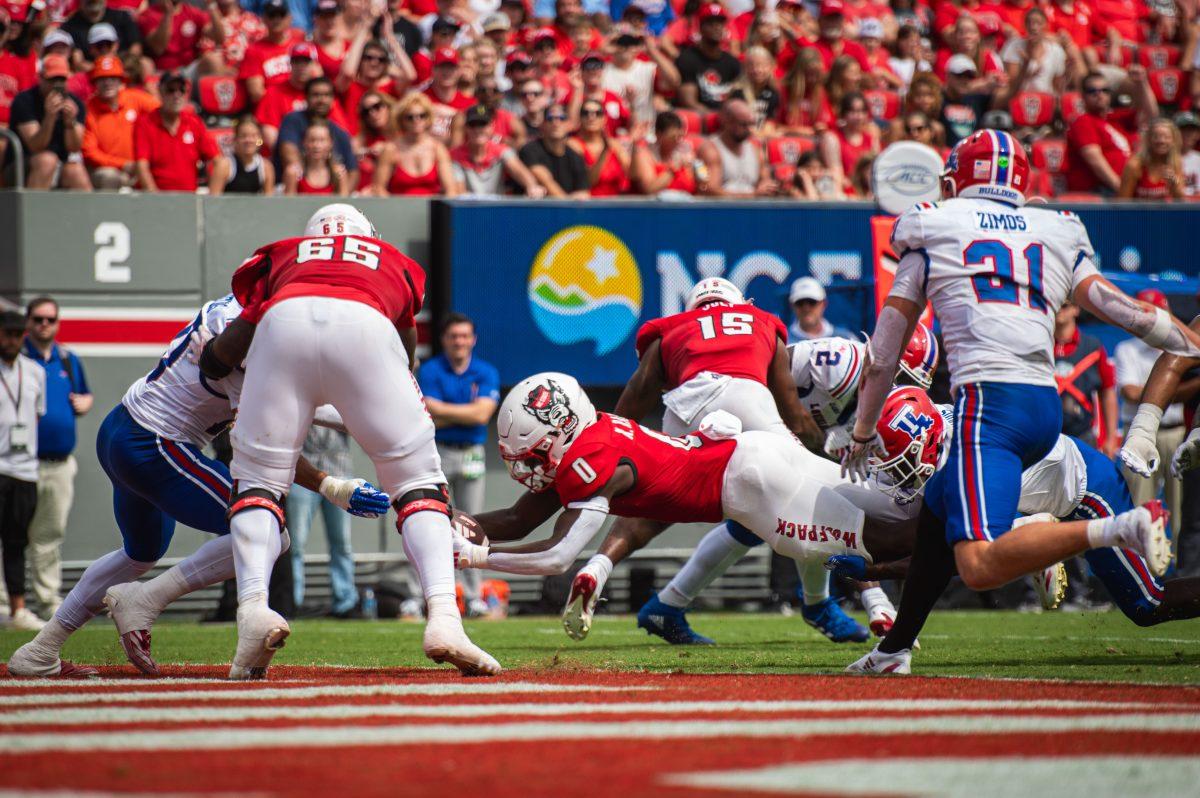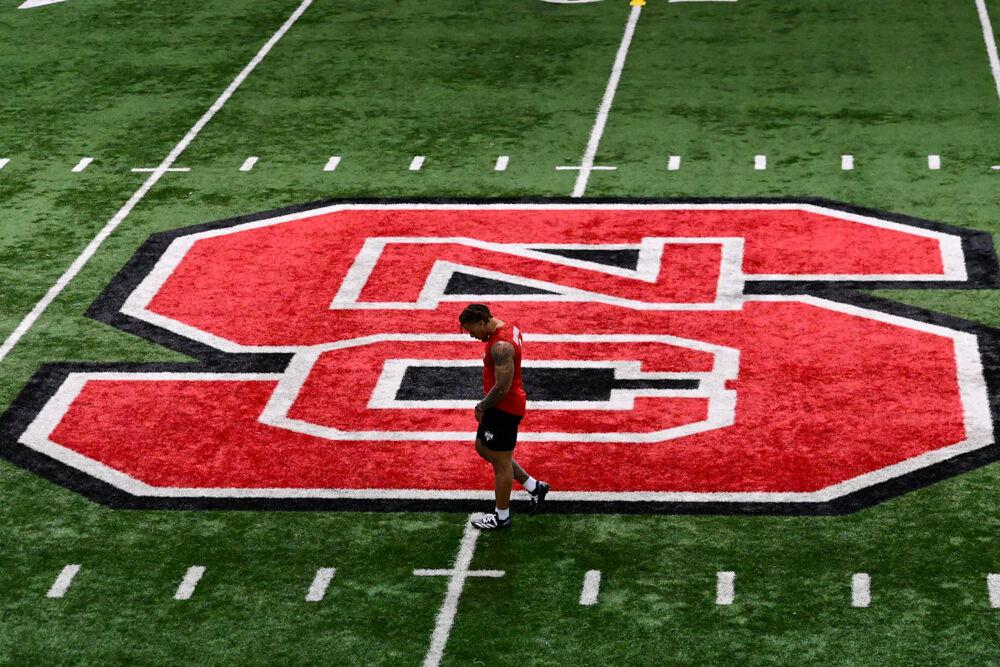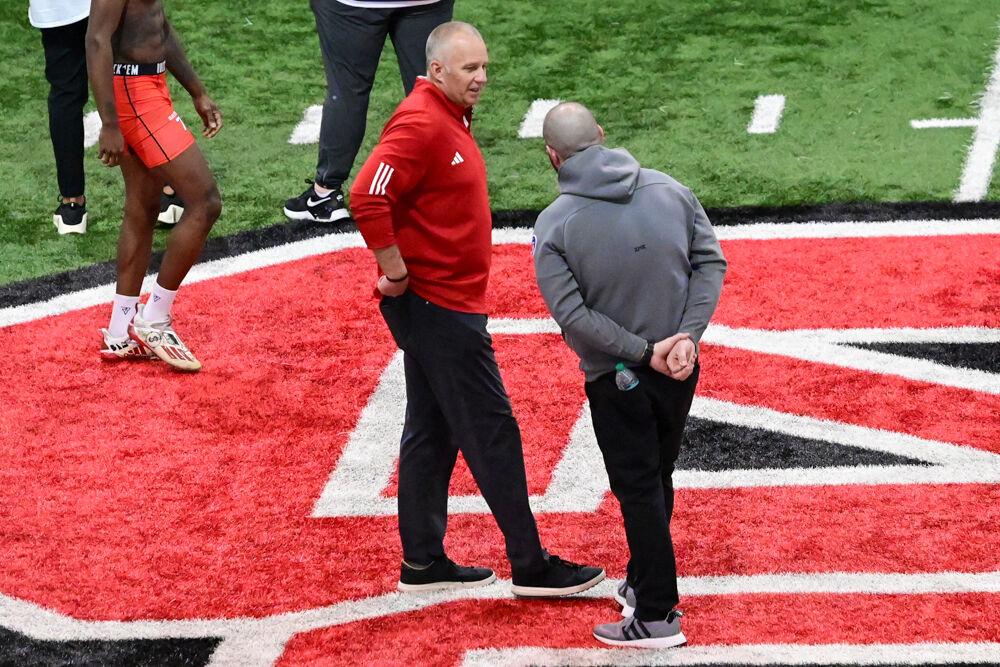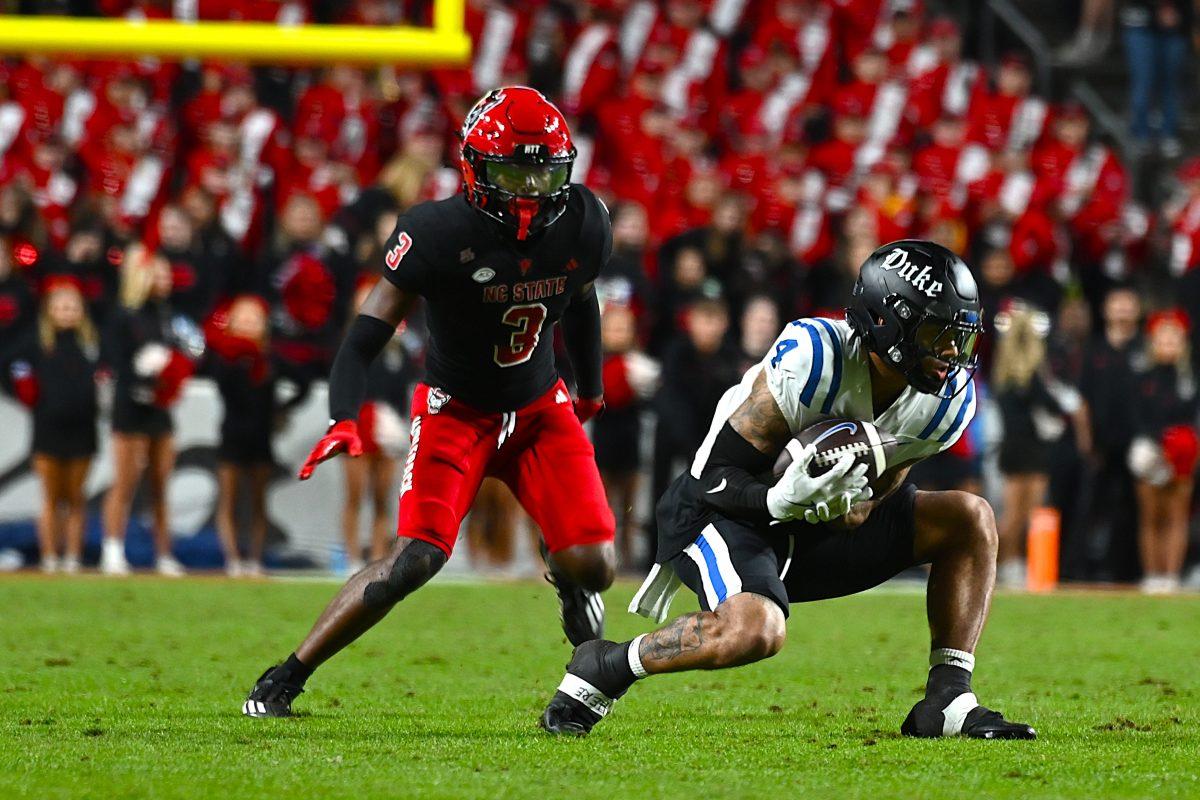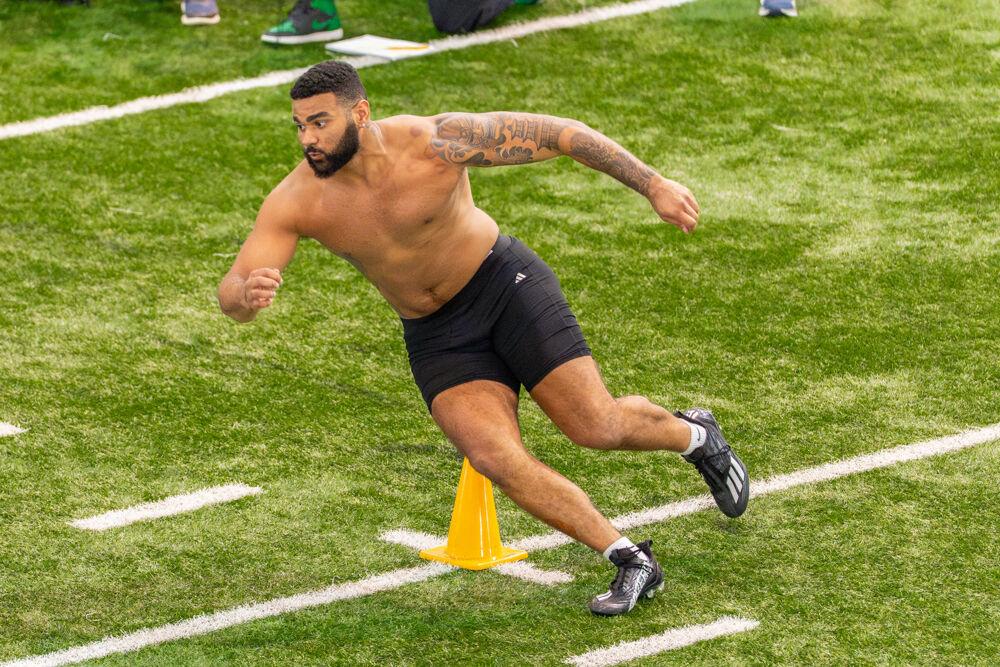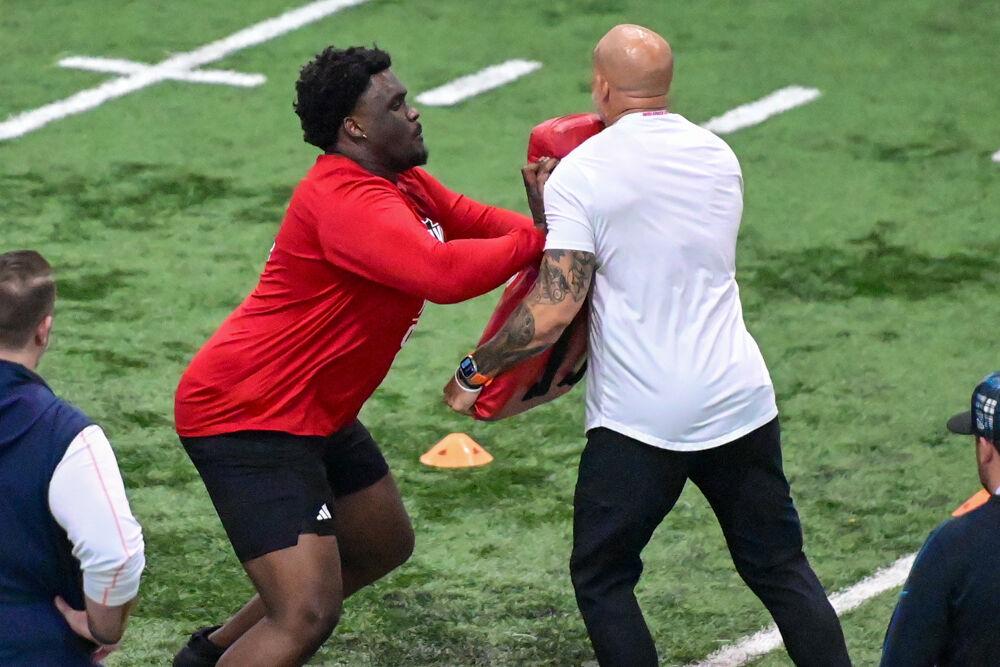NC State football has a rushing problem. Through three games, the Wolfpack hasn’t established a consistent attack on the ground, slowing down the entire offense. With a veteran offensive line and a trio of talented running backs, where did the train go off the tracks for the Pack?
Struggling to run the football is nothing new for NC State. The Wolfpack has finished in the bottom five of the ACC in rushing each of the last four seasons. However, the Wolfpack finally has an experienced offensive line with four returning starters and a stable of running backs, including former All-ACC graduate running back Jordan Waters.
Despite that, the results have fallen flat. Against Western Carolina, it took three quarters for the red-and-white to establish a ground game against an FCS defense, averaging just 3.4 yards per carry during that time. In its matchup against Tennessee, NC State never established the run with only 39 yards for the game. And versus Louisiana Tech, both Waters and redshirt freshman running back Hollywood Smothers never found their footing.
The main reason for a failed rushing attack seems to be the offensive line, especially on the interior. The Pack has struggled to create much push. Graduate guard Timothy McKay finished the season opener with a lackluster 57.5 PFF grade, then followed it up with an even worse performance against Tennessee. The veteran guard did bounce back against Louisiana Tech though, grading out as the Pack’s top offensive lineman of the week.
Meanwhile, graduate offensive lineman Zeke Correll has also struggled to establish a strong presence at center. Replacing Dylan McMahon, a sixth-round draft pick in this year’s NFL draft, the Notre Dame transfer was the lone addition to the line. In each of his three games, Correll has earned below a 70 PFF grade, including a season-low 54.4 against Tennessee. The struggles have come as a surprise after Correll started 31 games at Notre Dame, playing on one of the better offensive lines in the country.
In the running back room, there are also some concerning trends. After transferring in from Duke, Waters was expected to be the bellcow for the red-and-white’s rushing attack. Instead, he’s struggled to do much outside of the fourth quarter against Western Carolina. With negative four and 36 yards in each of the last two games, Waters has been unable to compensate for his struggling offensive line. Often too patient in the backfield waiting for running lanes to open, Waters has consistently been stopped behind the line of scrimmage.
Smothers also transferred in this offseason after redshirting as a freshman at Oklahoma. The former blue-chip prospect offers explosive speed, showcased by a 25-yard run against Western Carolina. Since then, Smothers has seen very limited playing time.
The lone positive development in the run game is the emergence of sophomore running back Kendrick Raphael, who shined against Louisiana Tech. While Raphael didn’t see the field much in the first two weeks, he played almost as much as Waters against the Bulldogs and significantly outpaced the Duke transfer. On nine carries, Raphael racked up 63 yards and a touchdown. Raphael’s seven yards per carry was also a welcome improvement from the rest of the team’s combined 3.3 yards per carry average.
Compared to Waters, Raphael is a smaller, quicker running back who can turn short gains into long touchdowns with his speed. With an offensive line that is struggling to open up space, Raphael has shown the ability to compensate and create his own space. Against Louisiana Tech, Raphael showcased his ability to create yards out of nowhere when he hurdled over a Bulldog defender in the backfield to turn a poorly blocked play into a positive gain. While it may be a long shot, Raphael presents a glimmer of hope for an otherwise toothless rushing attack.


